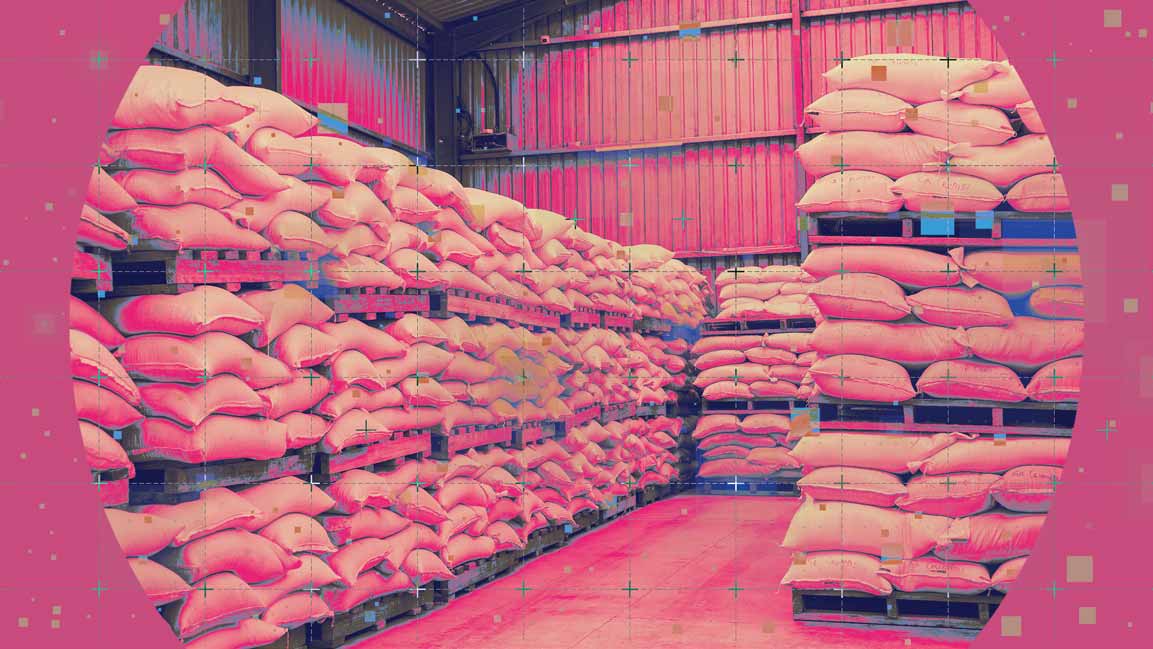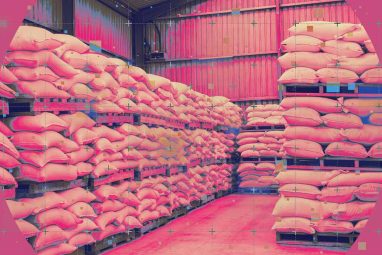India Rolls Out Digital Platforms to Modernize Grain Distribution
New AI, warehouse-management and sensor-based systems aim to streamline monitoring and movement across the Public Distribution System.
Topics
News
- Cloudflare’s Worst Outage Since 2019 Disrupts Global Internet
- India Rolls Out Digital Platforms to Modernize Grain Distribution
- Karnataka Pushes Global Partnerships at Bengaluru Tech Summit 2025
- Anthropic Lands $15 Billion From Microsoft, Nvidia in Expansive Cloud Tie-Up
- Pichai Sets the Tone as Google Pushes Gemini 3 Across Its Entire Ecosystem
- Infosys Charts a New Path for GCCs Built Around AI

[Image source: Chetan Jha/MITSMR India]
India on Tuesday introduced four technology platforms aimed at improving how foodgrain is monitored, stored and moved through the Public Distribution System, adding AI-driven feedback tools, integrated warehouse software and automated cargo-handling systems to the country’s food-security network.
The announcements were made by Union Minister Pralhad Joshi at an event in New Delhi, where he said the tools were part of a broader effort to reduce logistics costs and improve the movement of foodgrains nationwide.
Joshi said while technology would enhance transparency, “the human touch should not be missed” in delivering services to the poorest households.
One of the central launches was the Anna Sahayata Holistic AI Solution, or ASHA, an AI-led feedback platform that uses automated multilingual calls to collect reports from Public Distribution System beneficiaries.
The Ministry said the system operates at a cost of about Rs5 lakh, considerably lower than maintaining a traditional call centre. ASHA allows households to confirm whether they received their full entitlement, report grain quality and flag problems at Fair Price Shops.
The government said, “the system uses multilingual translation, sentiment analysis, automated grievance categorisation and real-time dashboards for administrators. ASHA reaches 20 lakh beneficiaries monthly across India, developed in partnership with Wadhwani Foundation and backed by India AI mission via Bhashini’s multilingual AI infrastructure.”
Alongside ASHA, the Ministry launched Bhandaran 360, a new enterprise resource planning platform developed by the Central Warehousing Corporation. Built on SAP S/4HANA, the system brings together 41 internal modules and connects with 35 external systems, including port networks and procurement agencies. Officials said it provides real-time dashboards, automated workflows and predictive analytics intended to standardise warehouse operations.
The Ministry also launched the Smart EXIM Warehouse System, which uses AI, IoT devices, FASTag and optical character recognition to automate gate entry, cargo tracking and yard management at container freight stations and general warehouses.
According to officials, the system is expected to reduce manual handling and improve turnaround time.
Additionally, the Food Corporation of India rolled out ANNA DARPAN, a microservices-based platform that replaces its Depot Online System and integrates procurement, storage, movement, sales, quality checks, labour records and contract monitoring into a single data environment.
The government said, “ANNA DARPAN connects key activities such as procurement, storage, movement, sales, quality checks, labour management and contract monitoring under one integrated system. It serves as a single unified source of truth for both FCI and DFPD.”
Separately, Joshi virtually inaugurated a 150,000-metric-ton steel silo complex in Malout, Punjab, which the Ministry said is designed to improve grain preservation by reducing losses from moisture, pests and temperature fluctuations.




